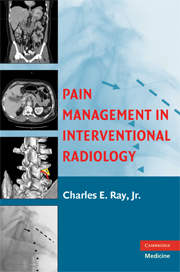2 - Clinical Evaluation of Low-Back Pain
Published online by Cambridge University Press: 04 September 2009
Summary
INTRODUCTION
The goal of this chapter is to explain the mindset and thought processes of the clinician evaluating a patient presenting with symptoms of low-back and leg pain.
The accurate clinical evaluation of the symptom of low-back pain is essential to the successful management of patients presenting with this problem, and interventional radiology (IR) plays an important role in the process.
It is vital to recognize that low-back pain is only a symptom and not a diagnosis or a disease entity in and of itself. Unfortunately, the successful management of patients with low-back pain is difficult because of the diversity of the pathologies producing low-back pain. There are many pathologies that can produce the symptom of low-back pain, and its treatment is very difficult or impossible unless one can locate and understand the causative pathology. The key to successful management of patients presenting with low-back pain is to identify and understand the pathological cause of their presenting symptoms of low-back pain, and to direct therapy toward the underlying cause rather than solely relieve the symptom of pain.
Although low-back pain typically arises from spinal causes, it must be remembered that there are pathologies outside of the spinal column that can present with low-back pain. These etiologies are typically considered only after a spinal column abnormality has been excluded.
A useful classification of the causes of low-back pain is the classification scheme described by Macnab et al. (1). These are presented in Table 1.
- Type
- Chapter
- Information
- Pain Management in Interventional Radiology , pp. 8 - 18Publisher: Cambridge University PressPrint publication year: 2008



